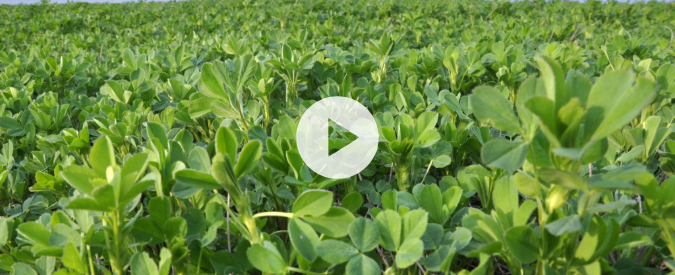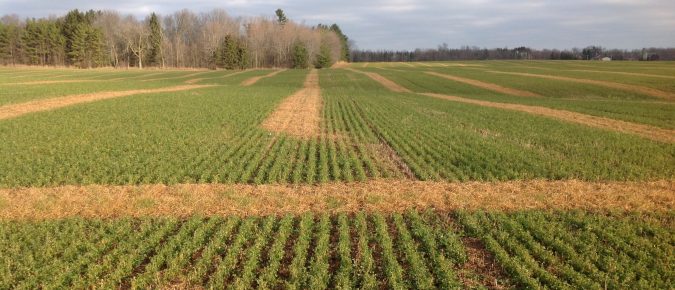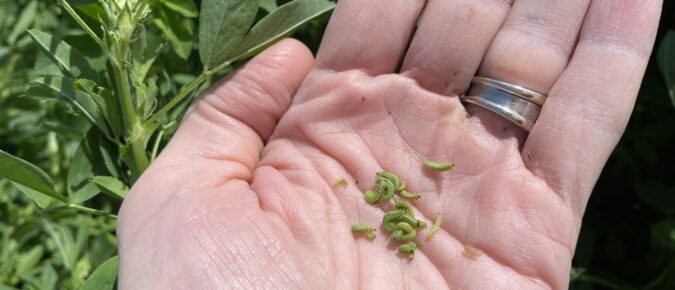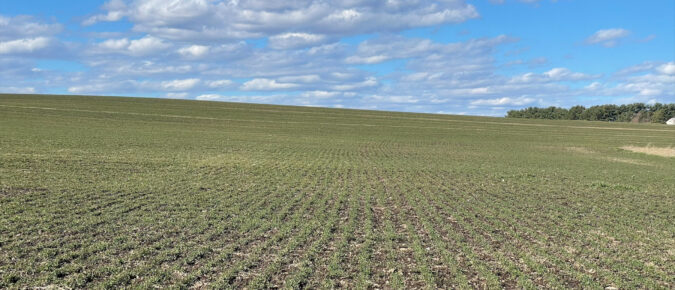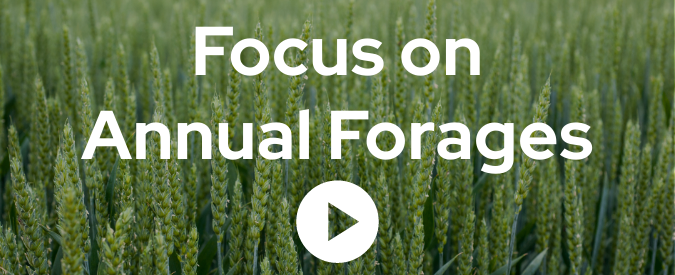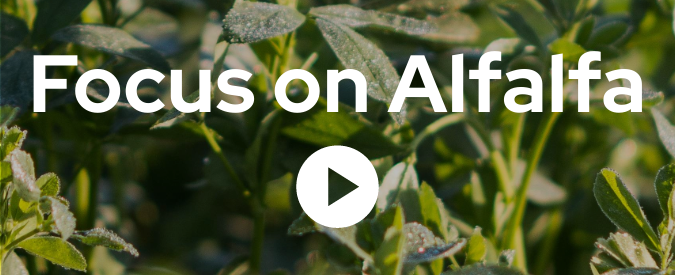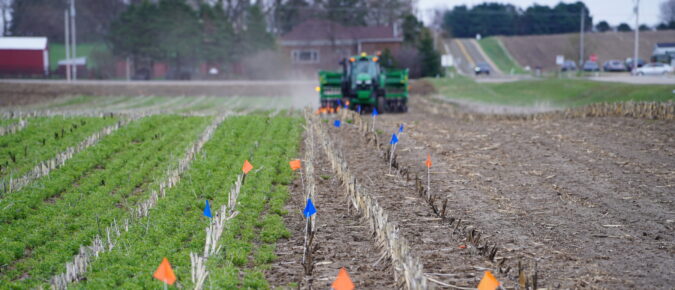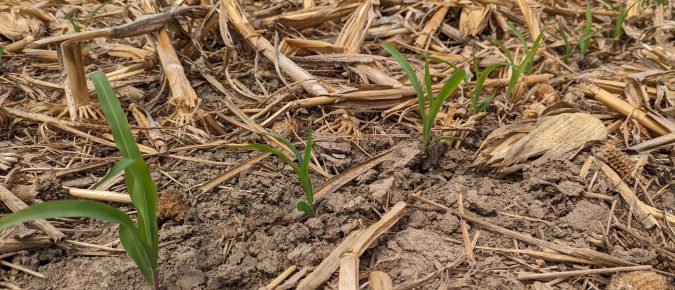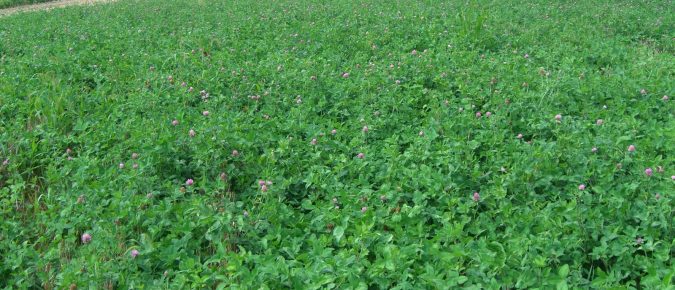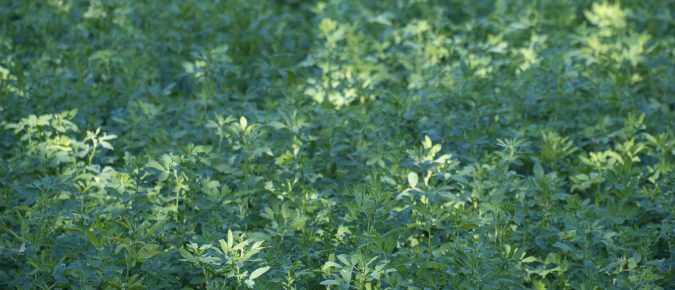The August 14 Badger Crop Connect webinar featured Scott Newell, alfalfa outreach specialist with the UW–Madison Division of Extension. This year (2024) has been very challenging to manage alfalfa with rain throwing many cutting schedules off the rails, leaving producers with lower quality forage than expected and trying to catch up with higher quality harvests. Scott Newell discusses the potential implications of this and the importance of managing for persistence in alfalfa to maximize overall productivity.
As we head toward the end of summer, we are closing in on time for a late summer alfalfa establishment. Commonly in Wisconsin, this is done following a wheat crop in the spring. This can lead to a few challenges to consider: residual herbicide carryover and the effects of volunteer wheat on successful establishment.
Alfalfa is a valuable forage crop in Wisconsin that supports dairy and livestock production. Alfalfa can be threatened by the alfalfa weevil (Hypera postica), an early-season pest that feeds on alfalfa leaves and may severely damage first-crop and second-crop alfalfa fields.
The April 24 Badger Crop Connect session features Scott Newell, Extension’s Alfalfa Outreach Specialist.
As we move into alfalfa planting season in Wisconsin, it is important to double-check herbicide records for the field you will be planting into. Many common herbicides used for commercial crop production contain restrictions on the label when rotating to alfalfa. A rotation restriction is the interval between herbicide application and when alfalfa planting can […]
The third Focus on Forage webinar in the 2024 series, Focus on Annual Forages, features discussions around annual forage crops for Wisconsin farms, the nutritive value of and strategies around feeding annual forages on dairy farms, the nitrogen demand of cereal forages, and nitrogen carryover and rate planning considerations for 2024.
The recordings from the second Focus on Forage webinar in the 2024 series, Focus on Alfalfa, feature Scott Newell, Dr. Kim Cassida, Dr. Mark Renz, and Dr. Emily Bick.
Alfalfa has an establishment-year yield issue. Corn has a runoff and soil erosion issue. But planting the two together could be a unique solution to mitigate both problems.
While the early part of the year was characterized by large amounts of precipitation, the May Wisconsin experienced this year was the 4th driest on record. While some areas are receiving scattered amounts of precipitation this week, the speed with which the drought came on and led to the designation of “flash drought” for much of the state led UW-Madison State Climatologist Steve Vavrus to call this time “remarkable.”
Alfalfa is known as the “Queen of Forages” given its importance to the Wisconsin dairy and livestock industry. Wisconsin harvests more than one million acres of alfalfa annually. While some of these transactions include weighing every load harvested to ensure fairness to both the buyer and the seller, there are many acres and individual cuttings where both parties agree to a fixed price per acre instead.
The second Focus on Forage session of 2023, Focus on Alfalfa, features Dr. Mark Renz, UW Professor and Extension Specialist; Steven Okonek, Division of Extension Crops/Soils Educator; Mike Bertram, Superintendent @ Arlington Research Station, and Dr. John Jones, UW Soil Science. The webinar was designed to assist farms and agronomists in their alfalfa management decision-making […]
The cold temperatures in early spring can cause some frost damage to alfalfa. Following are recommendations for evaluating damage and taking action.

